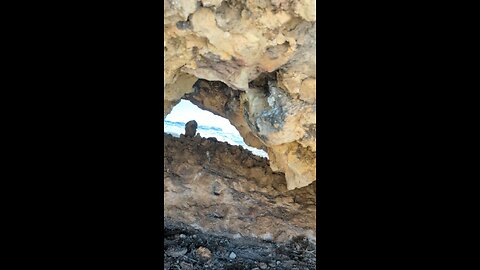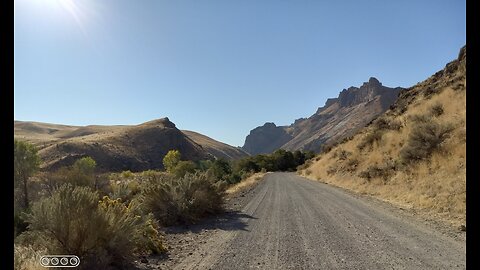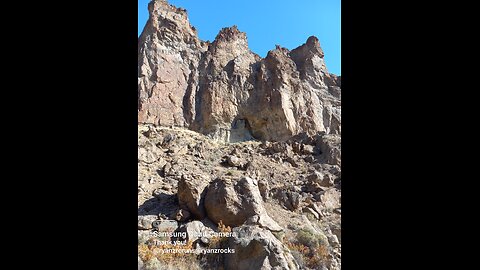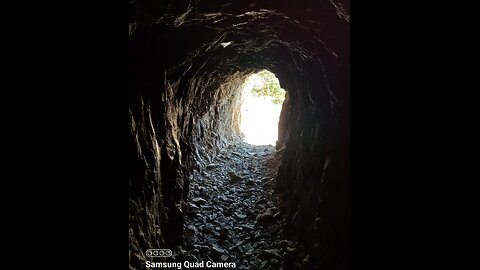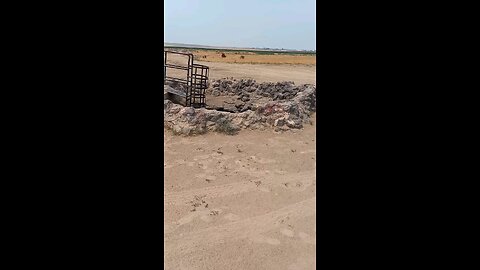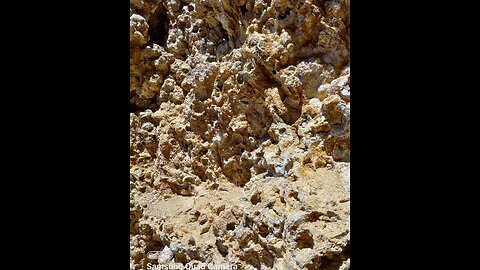Premium Only Content
This video is only available to Rumble Premium subscribers. Subscribe to
enjoy exclusive content and ad-free viewing.
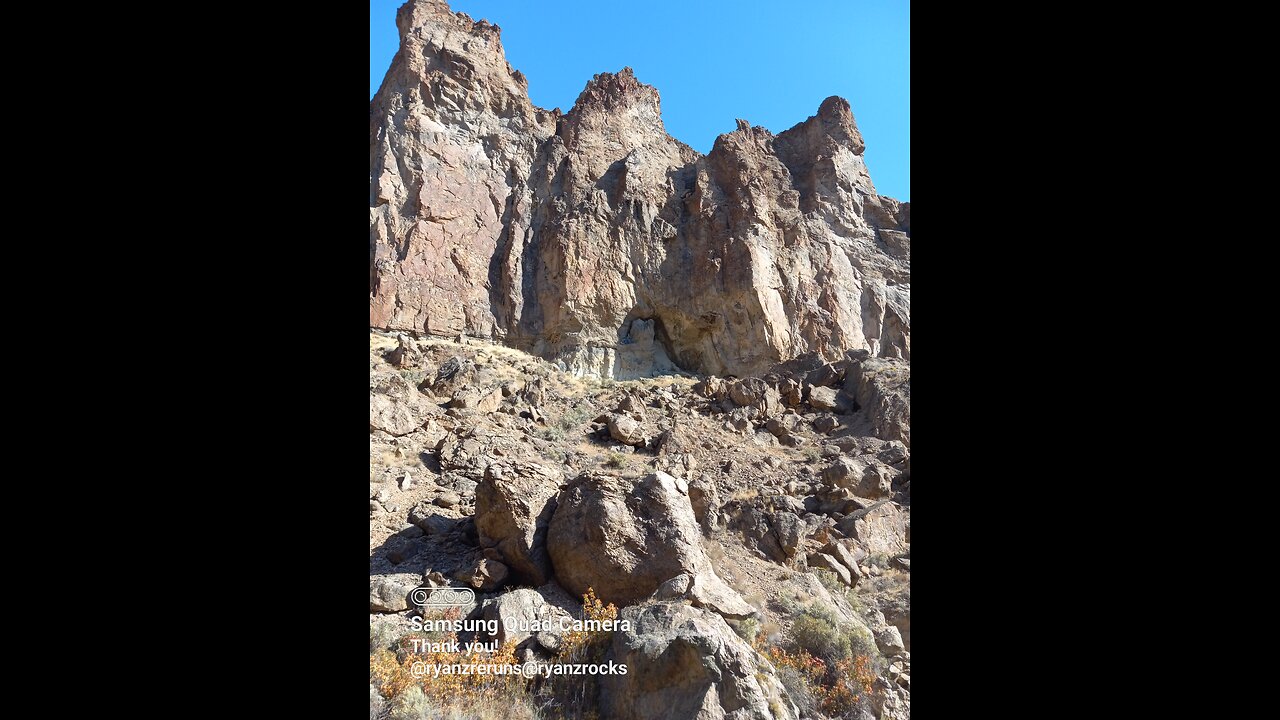
Caves!
HumbleConservative
- 3 / 7
1
Room with a view!
HumbleConservative
Near Leslie Gulch. Leslie Gulch is a stunning canyon located in Malheur County, Oregon, though it’s very close to the Oregon-Idaho border. It’s part of the Owyhee Canyonlands, a remote and rugged region known for its dramatic landscapes. The gulch is famous for its towering rock formations made of volcanic tuff, which create a surreal, almost otherworldly scenery with honeycombed cliffs and vibrant colors ranging from reds to yellows. It’s situated on the east side of Owyhee Lake (also called Owyhee Reservoir), formed by the Owyhee River, and is managed by the Bureau of Land Management (BLM) as an Area of Critical Environmental Concern.
The area is named after Hiram E. Leslie, a rancher who tragically died there in 1882 after being struck by lightning. Before that, it was known as Dugout Gulch. It’s a haven for outdoor enthusiasts, offering hiking, camping, wildlife viewing, and even boating near the reservoir. The Slocum Creek Campground, with 10 sites, is a popular spot for visitors, though it’s primitive—no water or electricity, just pit toilets and basic amenities. The gulch is home to over 200 California bighorn sheep, along with mule deer, elk, coyotes, and a variety of birds like quail and raptors. It also hosts rare plants, some found nowhere else, like Packard’s blazing star and Etter’s groundsel.
Getting there involves a bit of a trek—usually about a 15-mile drive down a gravel road from either Succor Creek Road or McBride Creek Road, accessible from Highway 95 in Idaho or Highway 201 in Oregon. It’s roughly two hours from Boise, Idaho, making it a feasible day trip from there, though the remoteness means no cell service and a need for preparation, especially since the road can get tricky after rain.
2
Succor Creek Canyon, OR.
HumbleConservative
@RyanzRocks #noob #rockhound #rockformation #sandstone #tumbling #agates #rocks #rockhounders #rockstructure #metamorphicrocks #metamorphic #igneousrocks #igneous #quartz #quartzite #geology #nodules #minerals #crystals #glowrocks #idahorockhunting #idahogems #rockcutting #thundereggs #chalcedony #opal #lavarock #rigidtools #ryobitools #riverrocks #translucentrocks #translucent #rockgarden #flow #vevortools #jasper #granite #caves #marble #carnelian #gneiss #limestone #calcite #gold #silver #botryoidal #geodes
Watch for Rocks!
HumbleConservative
@RyanzRocks #noob #rockhound #rockformation #sandstone #tumbling #agates #rocks #rockhounders #rockstructure #metamorphicrocks #metamorphic #igneousrocks #igneous #quartz #quartzite #geology #nodules #minerals #crystals #glowrocks #idahorockhunting #idahogems #rockcutting #thundereggs #chalcedony #opal #lavarock #rigidtools #ryobitools #riverrocks #translucentrocks #translucent #rockgarden #flow #vevortools #jasper #granite #caves #marble #carnelian #gneiss #limestone #calcite #gold #silver #botryoidal #geodes
4
Creepy cave!!!
HumbleConservative
A cave or cavern is a natural void under the Earth's surface. Caves often form by the weathering of rock and often extend deep underground. Exogene caves are smaller openings that extend a relatively short distance underground (such as rock shelters). Caves which extend further underground than the opening is wide are called endogene caves.
Speleology is the science of exploration and study of all aspects of caves and the cave environment. Visiting or exploring caves for recreation may be called caving, potholing, or spelunking.
Formation types
The formation and development of caves is known as speleogenesis; it can occur over the course of millions of years. Caves can range widely in size, and are formed by various geological processes. These may involve a combination of chemical processes, erosion by water, tectonic forces, microorganisms, pressure, and atmospheric influences. Isotopic dating techniques can be applied to cave sediments, to determine the timescale of the geological events which formed and shaped present-day caves.[4]
It is estimated that a cave cannot be more than 3,000 metres (9,800 ft) vertically beneath the surface due to the pressure of overlying rocks. This does not, however, impose a maximum depth for a cave which is measured from its highest entrance to its lowest point, as the amount of rock above the lowest point is dependent on the topography of the landscape above it. For karst caves the maximum depth is determined on the basis of the lower limit of karst forming processes, coinciding with the base of the soluble carbonate rocks. Most caves are formed in limestone by dissolution.
Caves can be classified in various other ways as well, including a contrast between active and relict: active caves have water flowing through them; relict caves do not, though water may be retained in them. Types of active caves include inflow caves ("into which a stream sinks"), outflow caves ("from which a stream emerges"), and through caves ("traversed by a stream").[7]
Speleothems in Hall of the Mountain King of Ogof Craig a Ffynnon, a solutional cave in South Wales.
Solutional cave
Solutional caves or karst caves are the most frequently occurring caves. Such caves form in rock that is soluble; most occur in limestone, but they can also form in other rocks including chalk, dolomite, marble, salt, and gypsum. Except for salt caves, solutional caves result when rock is dissolved by natural acid in groundwater that seeps through bedding planes, faults, joints, and comparable features. Over time cracks enlarge to become caves and cave systems.
The largest and most abundant solutional caves are located in limestone. Limestone dissolves under the action of rainwater and groundwater charged with H2CO3 (carbonic acid) and naturally occurring organic acids. The dissolution process produces a distinctive landform known as karst, characterized by sinkholes and underground drainage. Limestone caves are often adorned with calcium carbonate formations produced through slow precipitation. These include flowstones, stalactites, stalagmites, helictites, soda straws and columns. These secondary mineral deposits in caves are called speleothems.
The portions of a solutional cave that are below the water table or the local level of the groundwater will be flooded.
5
Kuna Cave Lavatube!
HumbleConservative
Kuna Caves are lava tubes found south of Kuna, Idaho. There is currently one publicly known entrance to the cave, an opening in the ground with a caged ladder leading down into the cave.
Background
The caves are about 50 feet (15 m) deep and run about a quarter mile north and around 1,000 feet (300 m) south from the entrance. The southern portion of the cave requires you to crawl through a trench dug out of the clay floor of the cave leading to a small space approximately 4 feet (1.2 m) long by 3 feet (0.91 m) wide by 3 feet (0.91 m) high in which you can turn around to return to the main cavern.[1]
Though according to locals, at one time the system had been much larger and was composed of multiple caves, even stretching to the Snake River, before the United States Army Corps of Engineers blocked it off by detonating dynamite collapsing a portion of the cave.[2] A logbook was placed deep in the North end of the cave for people to sign in 2018. Although the entrance has a ladder to get down into the cavern, it is not maintained. The short road leading to the cave is unmaintained, often very muddy, and the cave itself is littered with trash and graffiti. The interior temperature of the cave hovers around 56 °F (13 °C) year round.[3]
The official Bureau of Land Management stance on the cave is that it should not be visited by the general public.
6
Another cave!!!
HumbleConservative
A cave or cavern is a natural void under the Earth's surface. Caves often form by the weathering of rock and often extend deep underground. Exogene caves are smaller openings that extend a relatively short distance underground (such as rock shelters). Caves which extend further underground than the opening is wide are called endogene caves.
Speleology is the science of exploration and study of all aspects of caves and the cave environment. Visiting or exploring caves for recreation may be called caving, potholing, or spelunking.
Formation types
The formation and development of caves is known as speleogenesis; it can occur over the course of millions of years. Caves can range widely in size, and are formed by various geological processes. These may involve a combination of chemical processes, erosion by water, tectonic forces, microorganisms, pressure, and atmospheric influences. Isotopic dating techniques can be applied to cave sediments, to determine the timescale of the geological events which formed and shaped present-day caves.
It is estimated that a cave cannot be more than 3,000 metres (9,800 ft) vertically beneath the surface due to the pressure of overlying rocks. This does not, however, impose a maximum depth for a cave which is measured from its highest entrance to its lowest point, as the amount of rock above the lowest point is dependent on the topography of the landscape above it. For karst caves the maximum depth is determined on the basis of the lower limit of karst forming processes, coinciding with the base of the soluble carbonaterocks. Most caves are formed in limestone by dissolution.
Caves can be classified in various other ways as well, including a contrast between active and relict: active caves have water flowing through them; relict caves do not, though water may be retained in them. Types of active caves include inflow caves ("into which a stream sinks"), outflow caves ("from which a stream emerges"), and through caves ("traversed by a stream").
Speleothems in Hall of the Mountain King of Ogof Craig a Ffynnon, a solutional cave in South Wales.
Solutional cave
Solutional caves or karst caves are the most frequently occurring caves. Such caves form in rock that is soluble; most occur in limestone, but they can also form in other rocks including chalk, dolomite, marble, salt, and gypsum. Except for salt caves, solutional caves result when rock is dissolved by natural acid in groundwater that seeps through bedding planes, faults, joints, and comparable features. Over time cracks enlarge to become caves and cave systems.
The largest and most abundant solutional caves are located in limestone. Limestone dissolves under the action of rainwater and groundwater charged with H2CO3 (carbonic acid) and naturally occurring organic acids. The dissolution process produces a distinctive landform known as karst, characterized by sinkholes and underground drainage. Limestone caves are often adorned with calcium carbonate formations produced through slow precipitation. These include flowstones, stalactites, stalagmites, helictites, soda straws and columns. These secondary mineral deposits in caves are called speleothems.
The portions of a solutional cave that are below the water table or the local level of the groundwater will be flooded.
7
Cave full of thundereggs!
HumbleConservative
#cave #thundereggs #hiking #succorcreek #geology #ryanzrocks
Watch for Rocks!
8 months ago
8
@RyanzRocks #noob #rockhound #rockformation #sandstone #tumbling #agates #rocks #rockhounders #rockstructure #metamorphicrocks #metamorphic #igneousrocks #igneous #quartz #quartzite #geology #nodules #minerals #crystals #glowrocks #idahorockhunting #idahogems #rockcutting #thundereggs #chalcedony #opal #lavarock #rigidtools #ryobitools #riverrocks #translucentrocks #translucent #rockgarden #flow #vevortools #jasper #granite #caves #marble #carnelian #gneiss #limestone #calcite #gold #silver #botryoidal #geodes
Loading comments...
-
 3:55
3:55
The Official Steve Harvey
8 hours ago $0.08 earnedTop 5 Motivation Moments with Steve Harvey | Part 1
3.43K2 -
 18:37
18:37
Lacey Mae ASMR
8 hours ago $0.18 earnedASMR Plucking Your Negative Energy and Sending Positive Affirmations!
17.5K5 -
 1:11:12
1:11:12
Savanah Hernandez
5 hours agoIs Trump Changing His Tune on Mass Deportations & Americans Say NO WAR with Iran
117K155 -
 2:42:53
2:42:53
TimcastIRL
6 hours agoDemocrat Senator FORCIBLY REMOVED From DHS Presser, MAGA Says IT WAS STAGED | Timcast IRL
221K91 -
 47:23
47:23
Man in America
11 hours agoThe Billionaires Are Hoarding Cash—THEY KNOW WHAT'S COMING w/ Collin Plume
41.5K6 -
 3:44:32
3:44:32
Barry Cunningham
7 hours agoDID YOU GET YOUR TICKETS FOR THE DEMOCRAT CLOWN SHOW!!
121K67 -
 LIVE
LIVE
SpartakusLIVE
8 hours agoAre they really going to end WZ?? || Duos w/ @GloryJean
298 watching -
 7:01:19
7:01:19
MyronGainesX
21 hours ago $26.71 earnedIsrael Strikes Iran! WAR is here! ICE Riots, Diddy Trial And More!
143K45 -
 3:38:28
3:38:28
Alex Zedra
5 hours agoLIVE! Siege X
28.7K3 -
 4:58:19
4:58:19
GloryJean
7 hours ago#1 Gamer Dad Dominates on MnK 🖱️
44.9K1
